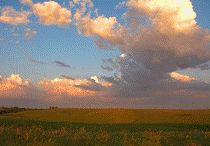North American Prairie Conference
Date of this Version
1989
Abstract
Natural prairie was a mosaic of patches of depths of plant litter due to topoedaphic conditions and to spatial-temporal variation in fire and grazing. Such variation in litter depth undoubtedly influenced the distribution and abundance of small mammals. To examine this issue, small mammals were censused and plant litter depth was measured during autumn from 1981 to 1984 on the Konza Prairie Research Natural Area near Manhattan, Kansas. Five to 11 sites subjected to fire at different times from 1967 to 1984 were sampled during each of the four years of the study. Relative densities of deer mice (Peromyscus maniculatus) were negatively correlated to litter depth, whereas relative densities of Elliot's short-tailed shrews (Blarina hylophaga) and western harvest mice (Reithrodontomys megalotis) were positively correlated to the depth of plant litter. White-footed mice (Peromyscus leucopus) , typically found in wooded and brushy habitats, were captured in prairie sites, but no significant association with plant litter was evident. Although prairie voles (Microtus ochrogaster) were expected to be positively associated with litter, no significant relationship was found for 1982 (the only year with sufficiently high densities to test for a possible pattern).


Comments
Published in Prairie Pioneers: Ecology, History and Culture: Proceedings of the Eleventh North American Prairie Conference, August 7-11, 1988, Lincoln, Nebraska (Lincoln, NE 1989).